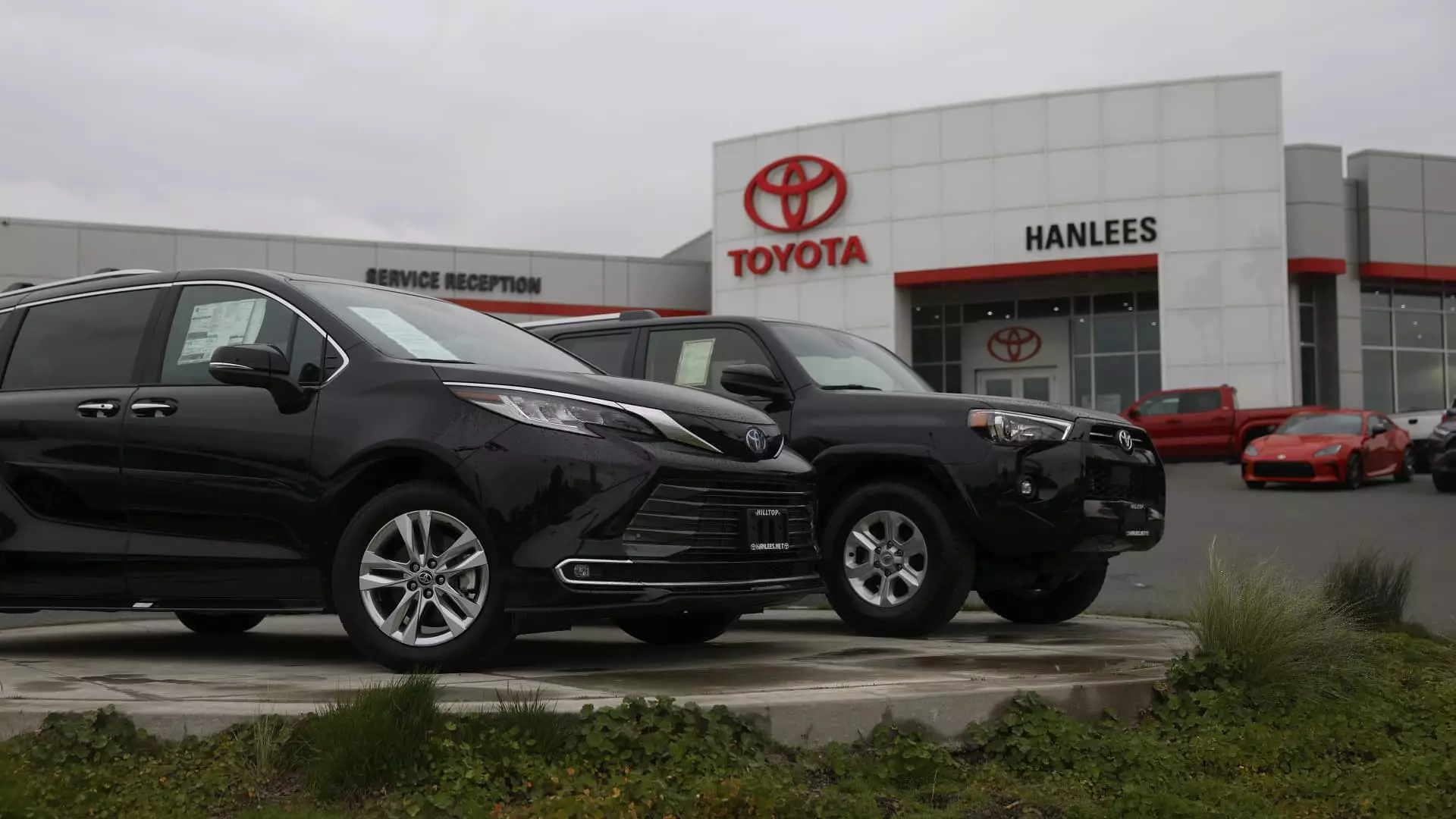The recent announcement of hefty tariffs on imported vehicles by the U.S. government has sent tremors through the automotive industry, predominantly affecting Asian automakers. With a staggering 25% tax imposed on cars “not made in the U.S.,” the news has ignited fears and uncertainty among companies that rely heavily on the lucrative American market. This move, reminiscent of a trade war mindset rather than constructive economic policy, threatens not just individual companies but the entire landscape of global trade.
Asian Automakers in Crisis Mode
The immediate fallout from the tariffs has been nothing short of catastrophic. Shares of major players such as Toyota, Nissan, and Hyundai have spiraled downward, with Toyota experiencing a staggering 9.4% decline and Hyundai faltering by an alarming 11.2%. For these companies, particularly the Japanese giants, the stakes couldn’t be higher. Their extensive operations and significant sales in the U.S. mean that a sudden policy shift such as this could unravel years of strategizing and market positioning. The reliance on North American sales reveals a lack of diversification in their strategies, making these companies overly vulnerable to U.S. policy changes.
The reality is stark. The automotive industry isn’t just about manufacturing; it’s about intricate supply chains spanning continents. As experts like Vivek Vaidya suggest, the U.S. market is irreplaceable for these automakers. If they are to survive this tumultuous era, they need a swift plan; however, upheaval in production or heavy investment in local manufacturing facilities are not solutions that materialize overnight.
The Inexorable Impact on Profits
Richard Kaye from Comgest articulated a critical point: companies like Toyota and Nissan must confront an uncomfortable choice. Do they absorb the costs associated with the tariffs or pass them on to the consumer? The latter option could lead to diminished sales volumes, while swallowing the increased costs would directly impact profits. Each company now teeters on the edge, contemplating their next move. The response could potentially shape the long-term financial health of these automotive giants.
The enigma surrounding production shifts adds another layer of complexity. Moving factories to reduce tariff implications demands billions of dollars and significant operational adjustments. As Joe McCabe notes, this isn’t a mere logistical tweak; it’s a full-scale transformation that could take years. For many automakers that have long relied on established production systems, the question persists: how to pivot effectively amidst such hostile conditions?
Opportunities Amidst Obstacles
Interestingly, within this cloud of negativity, there are whispers of resilience and opportunity, particularly when we look at automakers like Suzuki. With no presence in the U.S. market, the Japanese manufacturer has somehow emerged unscathed, showcasing a curious paradox in an otherwise grim reality. While other companies are grappling with stock declines, Suzuki’s performance remains comparatively stable. At this moment, they embody a lesson for others in the industry: diversification is crucial in today’s evolving automotive market.
Investors and analysts must rethink their strategies in light of the volatility brought on by tariffs. As the market turbulence continues, it may be prudent for companies to explore alternative markets and develop more adaptive business models that prioritize localization and flexibility.
All Eyes on the Future
As the dust settles, the larger question lingers: how will these tariffs, emblematic of rising protectionism, reshape the entire automotive industry moving forward? The imposition of such stringent tariffs reflects a deeper ideological battle, one that views economic interaction through a nationalistic lens. For many onlookers, this approach could jeopardize the prospects of innovation in the automobile sector, where collaboration has historically spurred advancements.
In the face of adversity, the path forward will demand extraordinary resolve and strategic finesse from Asian automakers. Having depended on the well-oiled machine of global trade, their ability to adapt will soon be put to the ultimate test. As it stands, the looming threat of tariffs may very well define the next era of automotive commerce, dictating how these companies navigate the complexities of a rapidly shifting geopolitical landscape.


Leave a Reply